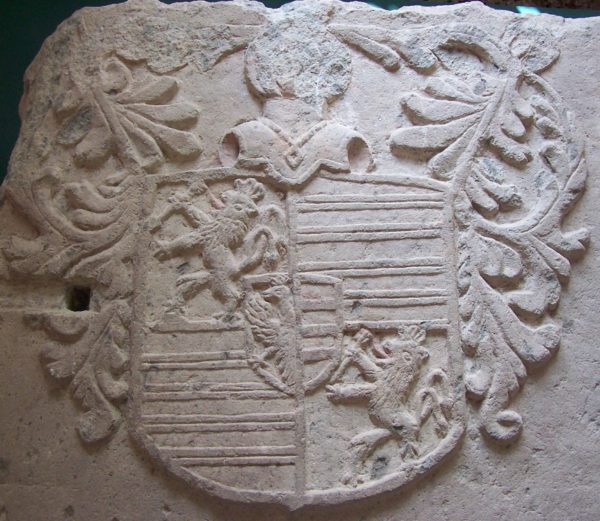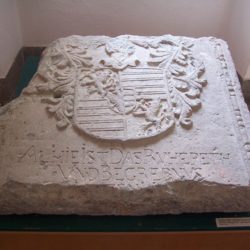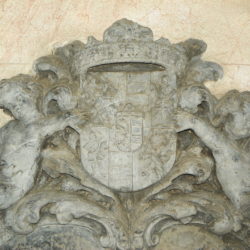
Coat of arms of the Fürnpfeil-Pfeilheimb family in Loka Castle
ŠKOFJA LOKA MUSEUM
Location of the coat of arms: tombstone
The Fürnpfeil family from Freising, which marked the history of Škofja Loka in the seventeenth century, was divided into two main lines. The older line was founded by Corbinian Fürnpfeil (1597–1657), the town purser and the steward of the Loka seigniory, and the younger line was established by his younger brother Sigmund (1602–1657). Sigmund spent his youth in Vienna (probably to pursue his education) until July 1618, when, at the age of sixteen, he was sent for by Corbinian to settle in Škofja Loka. There, he engaged in trade and soon became a town councilor and the director of the town hospital; in 1647, he also served as the town judge and two years later as the granger of the Loka seigniory, appointed by the bishop of Freising. In 1649, the entire Loka administration was thus consolidated in the hands of the Fürnpfeil brothers—Sigmund as the granger and Corbinian as the steward and purser. Later that same year, the brothers requested Emperor Ferdinand III to confirm their noble title with the predicate Pfeilheimb and improve their coat of arms. Their request was granted. The Fürnpfeil coat of arms was given a heart-shaped escutcheon with a half of a black (imperial) eagle and an additional pair of eagle wings above the helmet.
Like his brother, Sigmund soon established family relations with the townspeople and fathered at least fifteen children in two marriages. He died in August 1657, a little more than six months after Corbinian. The Škofja Loka Museum displays a part of what was most likely his tombstone. Its preserved upper section features a carved coat of arms and the partial inscription: ALHIE IST DAS RVHEPETH VND BEGREBNVS… The tombstone was initially placed in St. George’s Church in Stara Loka, where Sigmund was buried, and it may have been removed after a fire in 1817, when the church was partially reconstructed. The tombstone itself was apparently used as construction material in reworking the sexton’s house nearby. In other words, when the old sexton’s house underwent restoration after 1970, a fragment of the tombstone was uncovered in its walls and transferred to the Škofja Loka Museum, where it is still on view.


